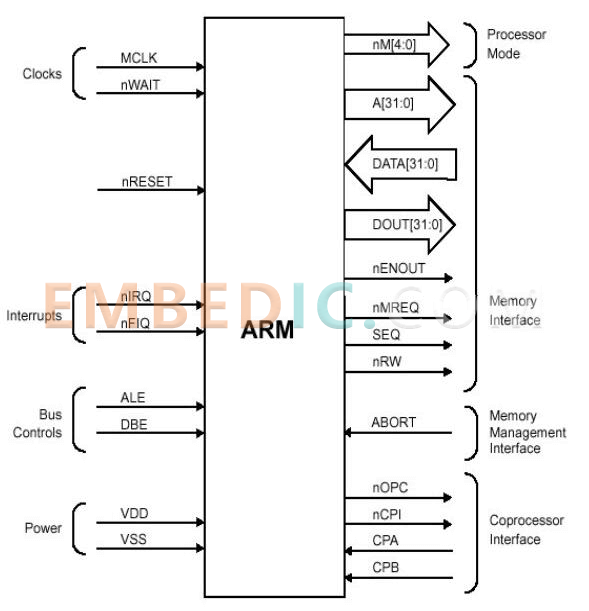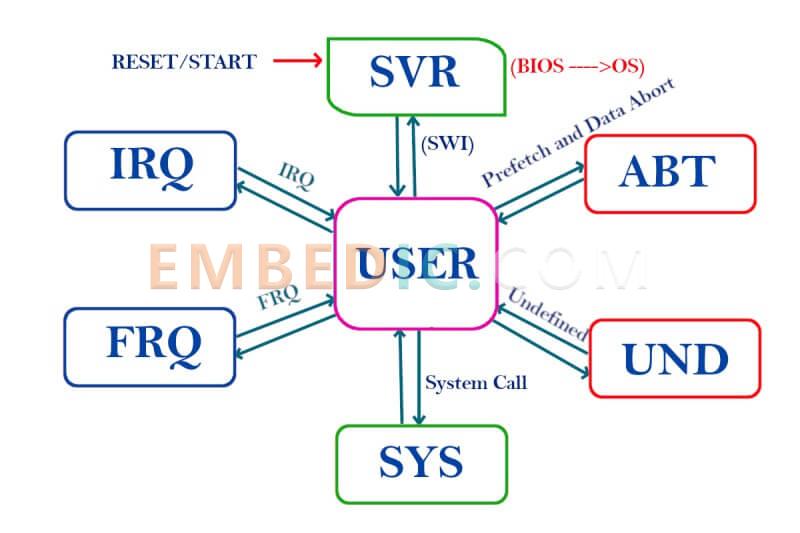ARM microcontroller (Advance Risc Machine) is a RISCMPU/MCU architecture, which is one of the most widely used and licensed processor cores in the world. Due to advantages such as low power consumption, reasonable performance, etc., these modules and wireless communication technologies and other embedded systems can also be used.
The ARM microcontroller is a single-chip microcomputer with an ARM processor as the core.
ARM is the name of a microprocessor design company. ARM neither produces nor sells chips. It is a company specializing in technology research and development and authorized transfer. World-renowned semiconductor electronics companies have established partnerships with ARM, including many domestic The company also buys core technology from arm for designing specialized chips.
Arm MCU has gradually entered the high-end market with its advantages of low power consumption and high cost performance, and has become the mainstream product nowadays.
The ARM microcontroller adopts a new 32-bit ARM core processor, which makes it surpass the traditional 51 series microcontroller in terms of instruction system, bus structure, debugging technology, power consumption and cost performance. On-chip peripherals, so the function and reliability are greatly improved.
ARM architecture processors are advanced Reduced Instruction Set Computing (RISC) machines and are 32-bit Reduced Instruction Set Computer (RISC) microcontrollers.
This ARM is a family of microcontrollers developed by manufacturers such as ST Microelectronics, Motorola, etc. The ARM architecture has completely different versions like ARMv1, ARMv2 etc. and each version has its own advantages and disadvantages.
1. Arithmetic logic unit;
2. Booth multiplier;
3. Barrel shifter;
4. Control unit.

Arithmetic Logic Unit (ALU)
The ALU has two 32-bit inputs. The main variable comes from the register file, while the other variable comes from the shifter. Status register flags are modified by the ALU output. Although the most significant bit actually represents the S flag, the ALU output operation is done by NORed to get the Z flag. The ALU has a 4-bit function bus that can implement up to 16 opcodes.
Multiplier factor
The multiplier factor has 3 32-bit inputs, the inputs are returned from the register file. The multiplier output is only the 32 least significant bits of the item. The image above shows a solid representation of the multiplier factor. The multiplication starts whenever the starting 04 input is active. When done, the output's Fin goes high.
Booth's algorithm
Booth's algorithm is a notable multiplication algorithm rule for 2's complement. This allows positive and negative numbers to be treated uniformly. Furthermore, without performing any addition or subtraction, the runs of 0 or 1 within the multiplier factor are skipped, potentially enabling faster multiplication. The figure shows the simulation results of the multiplier test bench. Apparently, the multiplication is only done in 16 clock cycles.
Barrel shifter
A barrel shifter has a 32-bit input to shift. This input is returned from the register file, or it may be immediate data. The Shift field in the instruction controls the operation of the barrel shifter. The amount by which the register should be shifted is contained in the immediate field of the instruction, or possibly the lower 6 bits of the register in the register file.
The shift_val input bus is 6 bits, allowing up to 32 shift bits. The shift type indicates the desired shift kind 00, 01, 10, 11 correspond to left shift, right shift, arithmetic right shift and right rotation, respectively. Barrel shifters are especially created by multiplexers.
Control unit
For any microprocessor, the control unit is the core of the whole process, it is responsible for the operation of the system, so the design of the control unit is the most important part of the whole design. Control units are sometimes pure combinational circuit designs. Here, the control unit is implemented by a simple state machine. The processor timing is additionally contained within the control unit.
From a programming point of view, there are usually two working states of an ARM processor:
1. In the ARM state, the processor executes 32-bit word-aligned ARM instructions.
2. In the thumb state, the processor executes 16-bit, half-word aligned thumb instructions.
When the ARM processor executes the instructions in the 32-bit ARM instruction set, it works in the arm state, and when executing the instructions in the 16-bit thumb instruction set, it works in the thumb state. During the execution, as long as certain conditions are met, it is possible to switch between the two working states at any time, and this switching does not affect the working mode of the processor and the contents in the corresponding registers.

ARM microcontrollers have been widely used in various fields due to their advantages of small size, low power consumption, high integration and high cost performance. The main applications are: mobile phones, PCs, servers, automobiles, Internet of Things, artificial intelligence solutions, etc.
From the mobile end to the PC end, the server end to the car end, IoT end, the ARM architecture is gradually moving towards a huge ecosystem.
It is estimated that by 2035, more than 1 trillion smart electronic devices will be interconnected, from various sensors, access control cards, mobile phones, home appliances, automobiles, to industrial machinery, communication base stations, data centers, cloud servers, and chips based on Arm architecture everywhere.
Configuration module enrichment. With the rapid development of semiconductor technology, more complex functions can be realized on ARM microcontroller, such as lcd controller, audio codec, large-capacity flash and ram, high-precision a/d converter, Ethernet controller, etc. More and more control modules can be integrated inside the chip.
The efficiency of the command system is improved. Realize the fusion of risc and cisc instruction sets, further improve the performance of the thumb instruction set, and the number of stages of the pipeline is developing to a higher level.
The processor frequency is further increased. Although the clock frequency of the high-end ARM processor xscale series is close to 1g, there is still a certain gap with the high frequency of general-purpose processors, so the development of ARM microcontrollers to higher frequencies and multi-core has become a trend.
Integration with dsp technology. With the development of science and technology, the boundary between ARM single-chip microcomputer and dsp is becoming more and more blurred. It is not uncommon for the two to be used together, especially in high-end electronic products. The two work together to meet the needs of users.
Diversified types of microcontrollers. The mainstream products in the ARM microcontroller market are Philips and Samsung. However, in recent years, many domestic enterprises and scientific research institutions have joined the R&D team. It is believed that a large number of ARM microcontrollers independently developed by my country will appear in the market in the near future. product.
Further Reading: 51, AVR, PIC, MSP430, ARM five major single-chip full analysis
Manufacturer: Texas Instruments
IC DSP FIX/FLOAT POINT 841FCBGA
Product Categories: DSP
Lifecycle:
RoHS:
Manufacturer: Analog Devices
IC CCD SIGNAL PROCESSOR 88LFCSP
Product Categories: DSP
Lifecycle:
RoHS:
Manufacturer: Analog Devices
IC CCD SIGNAL PROCESSOR 400BGA
Product Categories: DSP
Lifecycle:
RoHS:
Manufacturer: Texas Instruments
IC DSP FLOAT-POINT 141CPGA
Product Categories: DSP
Lifecycle:
RoHS:
Looking forward to your comment
Comment